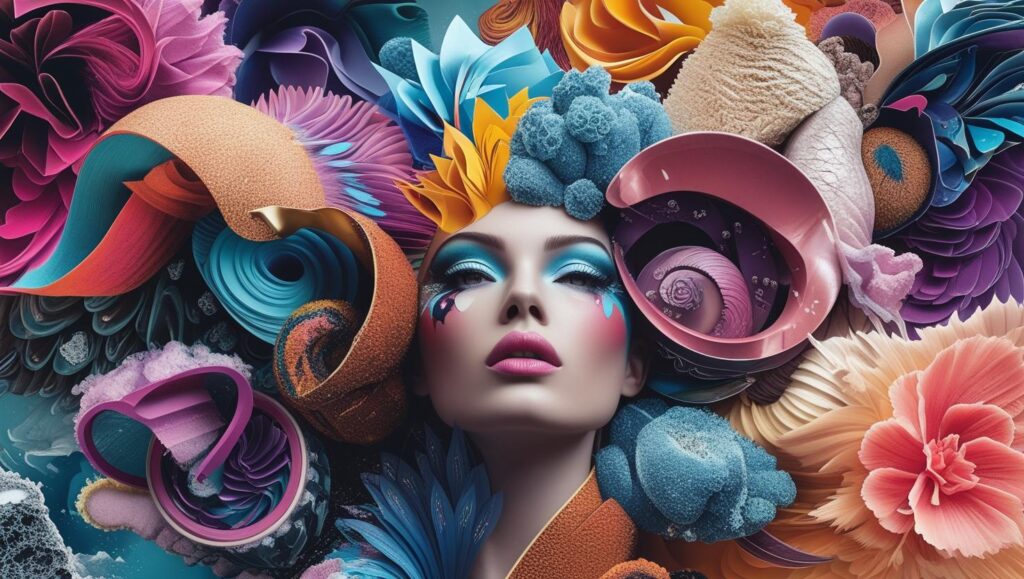
The world of design never stands still. Every year, new graphic design trends emerge, shaping how brands communicate and how designers express their creativity. If you’re a creative professional, freelancer, or design student, understanding these trends is essential for staying competitive and keeping your work fresh.
In this article, we’ll explore the top 7 graphic design trends in 2025—and how you can apply them to your own projects.
1. Graphic Design Trends in Minimalism: Less Is More
Minimalism continues to be a dominant force in design. Clean layouts, whitespace, and simplified typography allow brands to communicate messages clearly without overwhelming the audience.
Take inspiration from Apple’s design philosophy—their use of simplicity proves that less truly is more.
💡 Pro Tip: On Green Adventure Studio’s portfolio, you’ll notice how fonts and layouts use breathing space effectively to guide the eye.
2. Bold Typography: Making Words the Hero
One of the biggest graphic design trends this year is bold, oversized typography. Instead of relying only on imagery, brands now let words take center stage.
Designers are mixing serif and sans-serif fonts, experimenting with size, and even layering text over images. Platforms like Behance showcase inspiring examples daily.
3. 3D and Immersive Design: Adding Depth to Creativity
With the rise of AR/VR and advanced design tools, 3D elements are no longer just for video games. Designers are using depth, textures, and interactive visuals to engage audiences.
For freelancers showcasing work online, incorporating 3D into portfolios can set you apart. Adobe Substance 3D is a powerful tool to explore.
4. Graphic Design Trends in Sustainable Aesthetics
Eco-conscious design isn’t just a lifestyle—it’s a visual movement. Earth tones, natural textures, and organic shapes are becoming part of branding strategies.
At GA.STD (Green Adventure Studio), we often blend nature-inspired elements with modern layouts to reflect a brand’s eco-friendly identity. It’s a timeless approach that resonates with environmentally aware audiences.
5. Motion Graphics and Animated Visuals
Static visuals alone can no longer keep up with the digital attention span. Brands are increasingly using motion graphics—for social media, websites, and digital ads—to grab attention through short, eye-catching loops.
For powerful motion creation made easy, check out some of the top tools still active in 2025:
- Runway ML: An AI-powered platform that enables creators to generate motion graphics effortlessly, from text-prompts to animated visuals. It offers smart features like automated background removal and visual effects. Hatch Studios
- Lottie (by Airbnb): Allows designers to integrate scalable, lightweight animations into apps or websites with animation assets exported in JSON. Recent AI enhancements optimize file sizes and make animation accessible—even for those without coding experience. SuperAGI
Embracing these tools—where Runway ML caters to rapid creative workflows and Lottie ensures efficient, responsive animations—helps designers stand out. Those who can produce both static and dynamic visuals now hold a strong advantage in the marketplace.
6. Vibrant Color Gradients and Neon Palettes
Bold gradients and neon palettes are making a powerful comeback in 2025. Neon-inspired designs—featuring glowing color transitions and futuristic hues—are dominant in tech, music, and gaming visuals.
A recent guide on dynamic gradients by Muzli highlights how these bold, fluid color transitions create visually engaging designs with a sense of motion and energy.Muzli – Design inspiration hub
Another resource from DesignRush explores the resurgence of retro-style neon gradients, showing how they’re redefining modern aesthetics across branding and digital media.DesignRush
These neon and gradient trends not only capture attention but also convey a sense of vibrancy and innovation—especially effective in digital products, music branding, and youth-focused visuals.
7. AI-Enhanced Design Tools
Artificial intelligence is no longer the future—it’s the present. Tools like ChatGPT for creatives and AI-based design assistants are helping designers brainstorm layouts, generate concepts, and even automate repetitive tasks.
However, AI should be seen as a collaborator, not a replacement. The designer’s human touch—intuition, storytelling, and emotion—remains irreplaceable.
Why Following Graphic Design Trends Matters
Keeping up with graphic design trends doesn’t mean chasing fads. Instead, it helps you understand the direction of the industry, impress clients, and build a portfolio that feels current.
👉 If you’re looking to grow your career, check out our article on freelance design opportunities to combine trend awareness with practical career growth.
Final Thoughts
The graphic design trends in 2025—from minimalism to AI-enhanced tools—prove that design is both an art and a science. Whether you’re creating a brand identity, a digital product, or social content, staying updated will keep your work relevant, exciting, and impactful.
So, experiment, stay curious, and let these trends inspire your next big project!
